Prayer Plants are becoming quite popular houseplants. The common name of "Prayer Plant" often gets used to refer to plants whose leaves seem to raise upwards in prayer in the evenings. But really, there are several distinct plant families. For the purpose of this post, however, I will be lumping them all together since their needs and care are similar. This is one of my favorite plant groups because of their stunning markings and of course, the way their leaves move upward. They are fascinating and with a little knowledge, can be fairly easy to care for. And with all of the different varieties of prayer plants, there is bound to be one that you want to add to your plant collection. Here is how to care for Prayer Plants!
How to Care for Prayer Plants
These indoor plants have a reputation as being kind of hard to grow. That is because they are the Goldilocks of the plant world and need things to be "just right". Not too hot, not too cold. Not too wet, not too dry. You get the idea. But if you can find the sweet spot, then they will thrive!
Watering Prayer Plants
They prefer filtered water. Of course they do :) Haha. Tap water won't necessarily kill them, but they do better with water that doesn't have high minerals like hard water or salts from water softeners. I have a PUR water pitcher already so I use water from that. Rain water is another good option, although I don't have a way to collect it year round and live in a desert. So PUR pitcher it is! I do occasionally give mine tap water. Like all plants, it is best to water them with luke warm water instead of super cold.
Water your plant thoroughly until water is running out of the drainage hole and then rewater when the top 25% is dry. They do not like to dry out too much but can also get root rot if you water too often. These plants definitely need a drainage hole for the excess water to drain out. An evenly moist soil is best.
Temperature & Humidity for Prayer Plants
They don't have any special needs as far as temperature. Whew! They, like most houseplants, prefer the ideal temperature rage of 60-80 degrees. I have most of mine in my bedroom which is in the basement and is usually a bit cooler than the rest of the house at 65-70 and they do great. I have some upstairs where it tends to be a bit hotter and they are also happy there.
"They" say that these plants like high humidity. I take this with a grain of salt because I live in the desert and don't have a whole house humidifier system and mine do great. I do try to use a small humidifier during the winter but I'm not good at remembering to fill it. So it is hit and miss here during the winter and they still seem to do alright. I will say that my large Medallion Calathea did get some dry spots on it's leaves this winter. My point is, don't think that you need to have a super humid, "perfect" environment to keep these guys happy. If you were worried, you could always buy a small humidifier for the winter months or put your plant in the bathroom where it will get steam from the shower. They probably do love a humid environment seeing as they are a tropical plant, but they adapt well to whatever climate your home offers too.
Fertilizing your Prayer Plant
I used a diluted liquid fertilizer every time I water. I have also used the slow release spikes from Miracle Grow in the past with good results. All house plants benefit from fertilizing since eventually, the plants take up all the nutrients from the potting soil and those nutrients need to be replaced. Be careful not to over fertilize! This can burn, and ultimately kill the plant. When it doubt, it's a good idea to water it down a bit.
Light Requirements for Prayer Plants
Prayer Plants like to have sun but not too much and not direct light. Direct light is when the light is directly hitting the leaves. Like if it were close to a window without sheer curtains. It is the harshest of all lighting situations, and while some plants can handle limited time in direct sun, most prefer indirect sunlight. Examples of indirect lighting would be across the room from a window, or near a window if it has curtains or blinds to help filter the light. Too much light can burn the leaves as well as make the leave's color fade.
They can also handle low light conditions. But not super low light. In my bedroom, the windows face north and west. Most of the day they are in a low light situation but in the afternoon they get lots of sun. They seem to do well there. My Pray Plants that are upstairs get south and east light and they also do well. As long as the lighting isn't extreme one way or the other, you are good to go.
Types of Prayer Plant
Maranta (maranta leuconeura) is the plant most commonly thought of Pray Plant. There are many different kinds of maranta plants, but the most commonly found in nurseries are the Red Maranta, Lemon Lime Maranta, and the Kim Maranta. They have striking patterns with veins in contrasting colors.
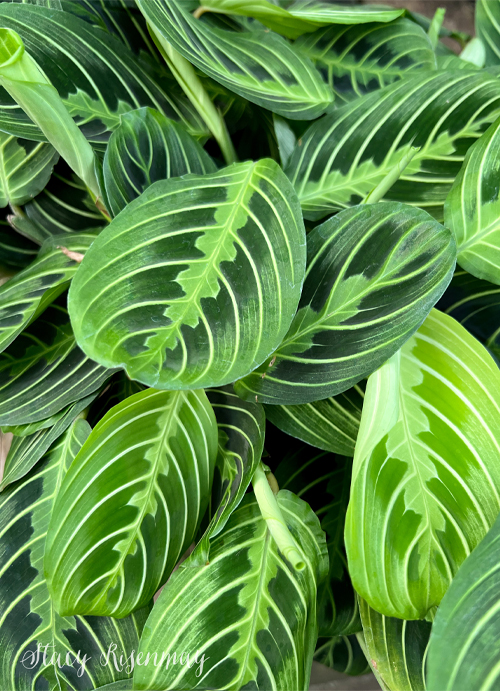
Calatheas are one of my favorites! There are so many fun varieties. I have been slowly collecting different types of calathea plants over the last couple of years. They are my latest obsession. I currently have Calathea Orbifolia (which has round leaves with silvery stripes), Calathea Ornata (Dark green leaves with pink pinstripes), Calathea Medallion (Large round leaves with dark and light rings), Calathea Rufibarba (Long leaves without distinct markings but still the trademark burgundy color on the underside of the leaves), and the Calathea Rattlesnake (Long leaves with markings).
Ctenanthe is another family of plants that fall into the Prayer Plant category. Common ones found in nursery are the Never Never, Tricolor, and Compactstar. Their leaves are long and narrow and they grow more upright rather than spreading.
There are not as many varieties of Stromanthe. The most readily available one or most recognized is the Triostar (similar to but not the same as the Tricolor Ctenanthe). It is on my list of plants to get in the near future. The pink, white, and green leaves are stunning. Stromanthe Sanguinea is another one you may come across at your local greenhouse. Sanguinea Magic Star is one I have not seen in person, but is also beautiful.
Are you familiar with this houseplant? Which of these are your favorite?
I recently wrote about Norfolk Pine care. Head over to read about that fascinating houseplant!
You will also like:




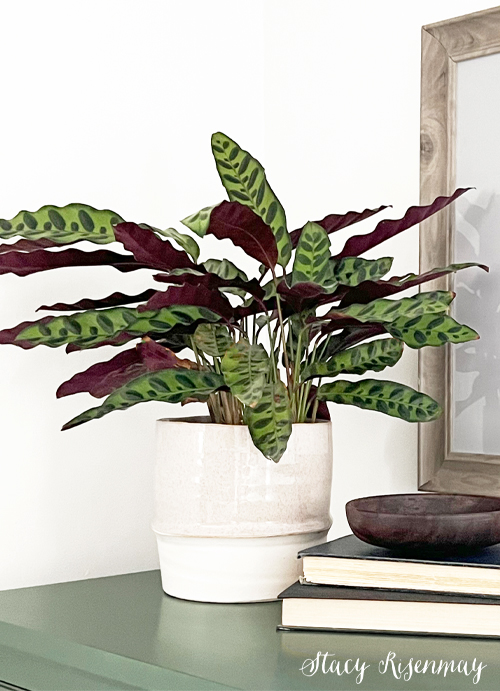
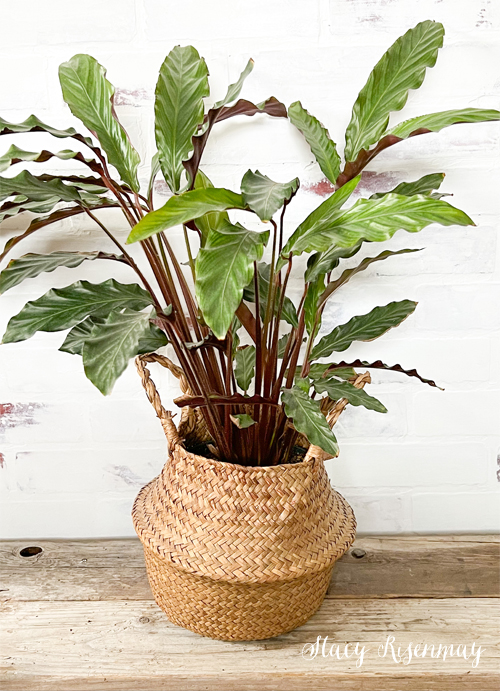

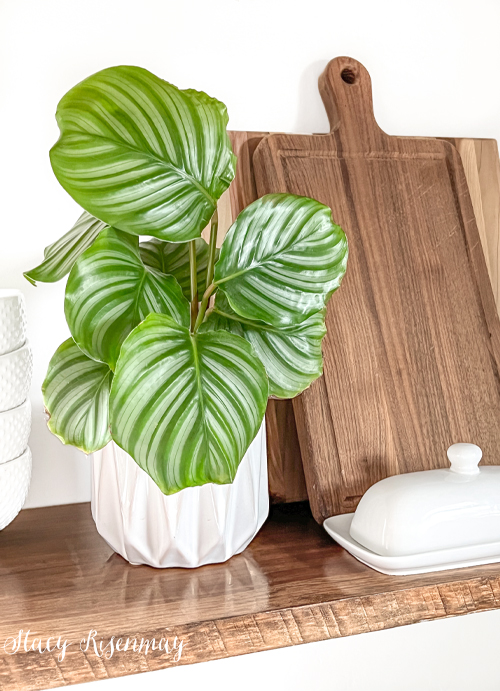
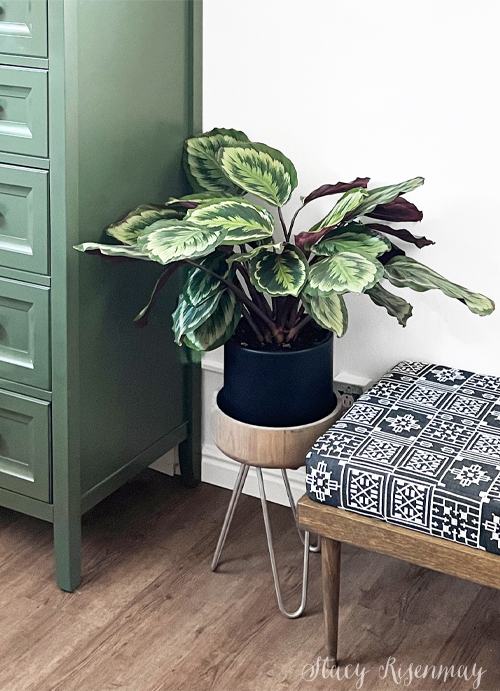
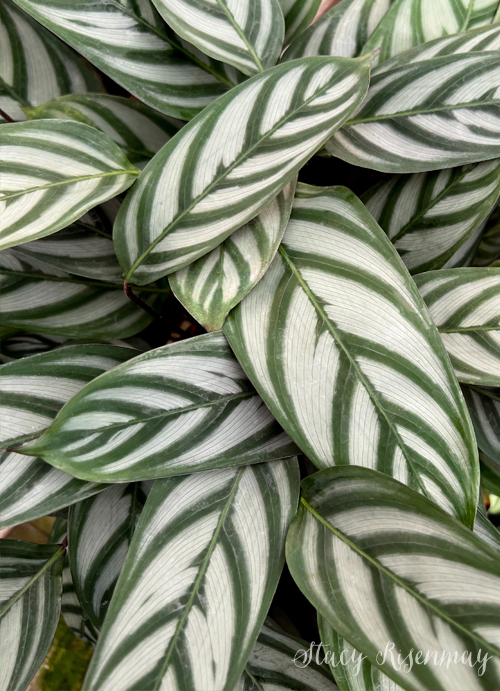
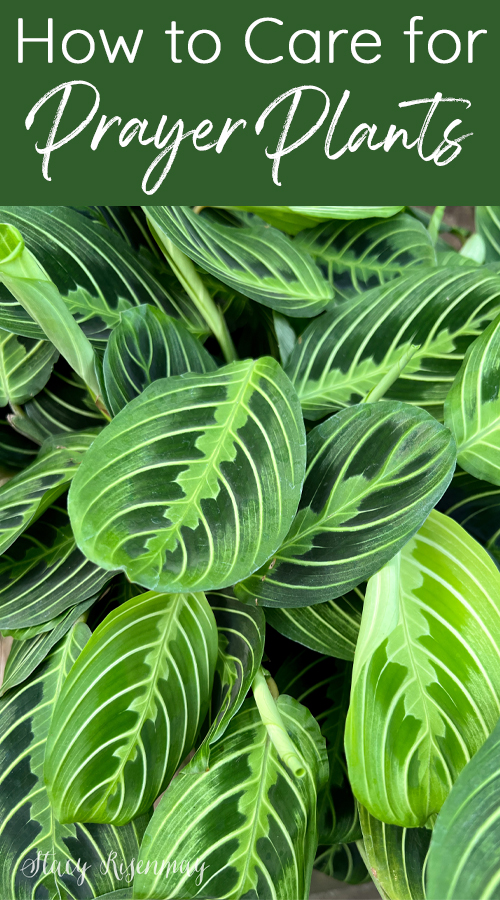
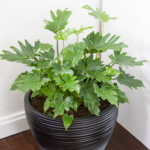
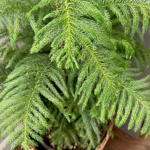
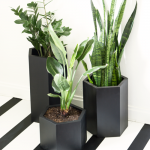



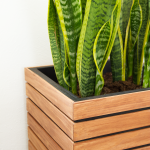
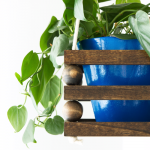





Comment Below!